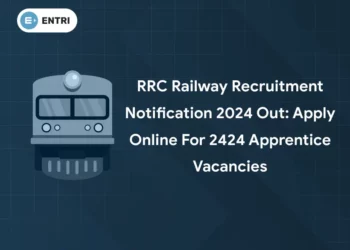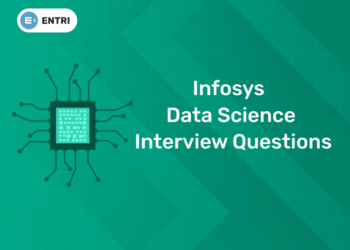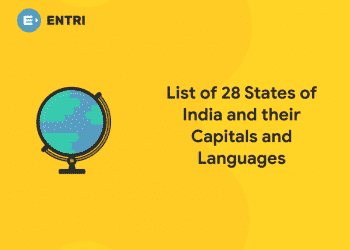Every year one of the seven Indian Institutes of Technology (at Kharagpur, Madras, Bombay, Delhi, Guwahati, Kanpur, and Roorkee), or Indian Institute of Science (IISc), Bangalore conducts the Graduate Aptitude Test in Engineering (GATE). Based on candidates performance in this test, IITs, IISc, and universities across India shortlist for the admissions to their various Masters, PhD, Integrated PhD courses. Candidates can use the same GATE score to land a graduate-level position in any of PSU’s HPCL, NFL, NLC, NPCIL etc. Aspirants can now check the GATE 2022 syllabus and exam pattern for the Electronics and Communication Engineering stream given below.
Download Entri! Get More Updates on GATE 2022
GATE 2022 Syllabus and Exam Pattern: Electronics and Communication Engineering
Every year one of the IIT’s organize the national entrance test GATE. The 2022 GATE will be conducted by the Indian Institute of Technology, Kharagpur. IIT will conduct the GATE 2022 across India in 29 subjects. The exam has tentatively been scheduled over the 5th, 6th,12th, and 13th of February 2022 across India. Candidates can now apply for the GATE 2022 Electronics and Communication Engineering through the Kharagpur IIT GATE portal till October 01, 2021.
Attempt free General Affairs Mock Test! Download Entri App!
GATE 2022 Electronics and Communication Engineering Exam Pattern
| Paper Code | General Aptitude (GA)
Marks |
Engineering
Topics + Mathematics Marks |
Maximum
Marks |
Exam
Duration |
|---|---|---|---|---|
| EC | 15 | 85 | 100 | 03 hours |
- Number of Questions: 65
- The General Aptitude section has 5 questions of 1-mark each (sub-total 5 marks) and 5 questions carrying 2-marks each (sub-total 10 marks).
- The engineering Mathematics will have questions carrying a total of 13 marks. Some of these questions may be of numerical answer type.
- The Electronics and Communication engineering paper will have an objective as well as numerical questions carrying a total of 72 marks.
- For every wrong answer in the MCQ, there will be negative marks. For 1-mark questions in MCQ, 1/3 mark
will be deducted, and for 2-mark MCQ, 2/3 mark will be deducted for each wrong answer.
Attempt free UPSC Mock Tests! Download Entri App!
GATE 2022 Electronics and Communication Engineering Syllabus
Let’s check the GATE 2022 syllabus for the Electronics and Communication Engineering stream in detail:
GATE 2022 ECE Syllabus: Engineering Mathematics
- Linear Algebra: Vector space, basis, linear dependence and independence, matrix algebra, eigenvalues and eigenvectors, rank, solution of linear equations- existence and uniqueness.
- Calculus: Mean value theorems, theorems of integral calculus, evaluation of definite and improper integrals, partial derivatives, maxima and minima, multiple integrals, line, surface and volume integrals, Taylor series.
- Differential Equations: First order equations (linear and nonlinear), higher-order linear differential
equations, Cauchy’s and Euler’s equations, methods of solution using a variety of parameters, complementary function and particular integral, partial differential equations, variable separable method, initial and boundary value problems. - Vector Analysis: Vectors in plane and space, vector operations, gradient, divergence and curl, Gauss’s, Green’s and Stokes’ theorems.
- Complex Analysis: Analytic functions, Cauchy’s integral theorem, Cauchy’s integral formula, sequences, series, convergence tests, Taylor and Laurent series, residue theorem.
- Probability and Statistics: Mean, median, mode, standard deviation, combinatorial probability, probability distributions, binomial distribution, Poisson distribution, exponential distribution, normal distribution, joint and conditional probability.
Download Entri! Get Access to GATE EC 2022 Study Materials
Networks, Signals and Systems
- Circuit analysis: Node and mesh analysis, superposition, Thevenin’s theorem, Norton’s theorem,
reciprocity. Sinusoidal steady-state analysis: phasors, complex power, maximum power transfer. - Time and frequency domain analysis of linear circuits: RL, RC and RLC circuits, Solution of network equations using Laplace transform.
- Linear 2-port network parameters, wye-delta transformation.
- Continuous-time signals: Fourier series and Fourier transform, sampling theorem and applications.
- Discrete-time signals: DTFT, DFT, z-transform, discrete-time processing of continuous-time signals. LTI systems: definition and properties, causality, stability, impulse response, convolution, poles and zeroes, frequency response, group delay, phase delay.
Download Entri! Attempt GATE 2022 Study Materials
GATE ECE Syllabus: Electronic Devices
- Energy bands in intrinsic and extrinsic semiconductors, equilibrium carrier concentration, direct and indirect band-gap semiconductors.
- Carrier transport: diffusion current, drift current, mobility and resistivity, generation and recombination of carriers, Poisson and continuity equations.
- P-N junction, Zener diode, BJT, MOS capacitor, MOSFET, LED, photodiode and solar cell.
Attempt free Current Affairs Mock Tests! Download Entri App!
Analog Circuits
- Diode circuits: clipping, clamping and rectifiers.
- BJT and MOSFET amplifiers: biasing, ac coupling, small-signal analysis, frequency response.
- Current mirrors and differential amplifiers.
- Op-amp circuits: Amplifiers, summers, differentiators, integrators, active filters, Schmitt triggers and oscillators.
Attempt free Numerical Ability Mock Tests! Download Entri App!
GATE 2022 ECE Syllabus: Digital Circuits
- Number representations: binary, integer and floating-point- numbers. Combinatorial circuits: Boolean algebra, minimization of functions using Boolean identities and Karnaugh map, logic gates
and their static CMOS implementations, arithmetic circuits, code converters, multiplexers, decoders. - Sequential circuits: latches and flip-flops, counters, shift-registers, finite state machines, propagation
delay, setup and hold time, critical path delay. - Data converters: sample and hold circuits, ADCs and DACs.
- Semiconductor memories: ROM, SRAM, DRAM.
- Computer organization: Machine instructions and addressing modes, ALU, data-path and control unit, instruction pipelining
Attempt free General Reasoning Mock Tests! Download Entri App!
GATE 2022 ECE Syllabus: Communications
- Random processes: autocorrelation and power spectral density, properties of white noise, filtering of random signals through LTI systems.
- Analog communications: amplitude modulation and demodulation, angle modulation and demodulation, spectra of AM and FM, superheterodyne receivers.
- Information theory: entropy, mutual information and channel capacity theorem.
- Digital communications: PCM, DPCM, digital modulation schemes (ASK, PSK, FSK, QAM), bandwidth, inter-symbol interference, MAP, ML detection, matched filter receiver, SNR and BER.
- Fundamentals of error correction, Hamming codes, CRC.
Download Entri App! Get Instant GATE 2022 Updates
Electromagnetics
- Maxwell’s equations: differential and integral forms and their interpretation, boundary conditions, wave equation, Poynting vector.
- Plane waves and properties: reflection and refraction, polarization, phase and group velocity, propagation through various media, skin depth.
- Transmission lines: equations, characteristic impedance, impedance matching, impedance transformation, S-parameters, Smith chart.
- Rectangular and circular waveguides, light propagation in optical fibres, dipole and monopole antennas, linear antenna arrays.
Click here to download the GATE 2022 Electronics and Communication Engineering syllabus pdf
GATE 2022 SYLLABUS: ELECTRONICS & COMMUNICATION
If you are planning to give the GATE Electronics and Communication Engineering in February 2022 then you must prepare yourself by taking mock tests, and relevant study materials. Most of the aspirants required at least 06 months to complete the whole syllabus. While preparing for the GATE test in the Electronics stream, you should check the previous year question papers and other similar exam question papers for practice.
Attempt free General Aptitude Mock Tests! Download Entri App!










